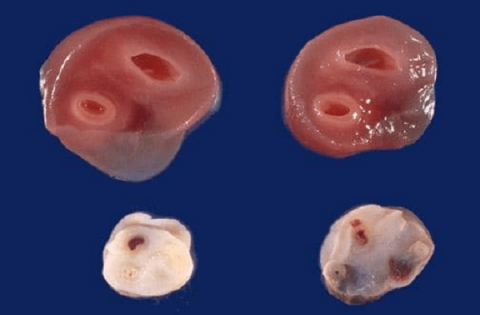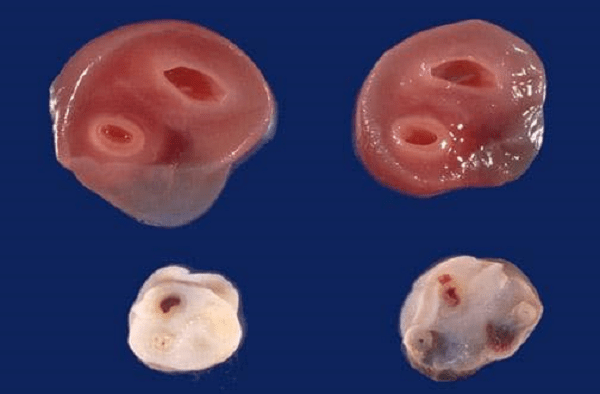Single Artery Umbilical Cord: Definition, Causes, Prognosis, and What Mothers Need to Know

The umbilical cord has a single artery, a condition that often worries mothers about their baby's development. Does this condition affect the baby, and if so, how? What should a mother do when diagnosed with a single artery umbilical cord? Read on to find out!
content
- 1. What is a single artery umbilical cord?
- 2. What causes a single artery in the umbilical cord?
- 3. Other risk factors?
- 4. The single-arterial umbilical cord can cause harm to the baby?
- 5. Tests to diagnose?
- 6. Single artery umbilical cord affects the method of birth?
1. What is a single artery umbilical cord?
The umbilical cord is responsible for transporting oxygen-rich blood to the baby and removing oxygen-poor blood and waste products from the baby.
See also: Umbilical cord: overview and common problems
Normally, the vascular structure in the umbilical cord consists of two arteries and one vein.
The function of the umbilical vein is to carry oxygen-rich blood to the baby. Meanwhile, the umbilical arteries carry oxygen-poor blood and waste products from the baby to the placenta. The placenta then returns waste products to the mother's blood and into the lungs and kidneys for removal.
Some umbilical cord abnormalities may include the umbilical cord being too short or too long. Another possible abnormality is a two-vessel (one artery and one vein) umbilical cord also known as a single-artery umbilical cord. This means that instead of having two arteries and one vein, there is only one artery and one vein.

Picture of a normal umbilical cord and a two-vessel umbilical cord
The vascular structure of the umbilical cord is usually examined during an ultrasound during the second trimester. Single-arterial umbilical cord is commonly seen on ultrasound in about 1% of pregnancies. Fortunately, this condition largely does not affect the health of the baby. Especially when no other abnormalities of fetal morphology were detected on ultrasound.
2. What causes a single artery in the umbilical cord?
There is no one obvious reason. One theory is that an artery may stop growing and recede. Another theory is that the umbilical artery very early did not divide into two separate arteries as it normally does.
3. Other risk factors?
Single artery umbilical cord can occur in any pregnancy. However, there are a number of factors that can increase this chance, which may include:
- Multiple pregnancy (twins, triplets, etc.)
- White ethnicity
- Thai is a girl
- Mother over 40 years old
- Mother has diabetes or high blood pressure
- Mom smokes
However, the fact that the umbilical cord is single artery can occur even if the mother completely does not have the above factors.
4. The single-arterial umbilical cord can cause harm to the baby?
For the most part, this condition does not affect the health and development of the baby. Many babies have an umbilical artery and are born healthy.
However, some children have birth defects. Birth defects can include: heart defects, kidney defects, spinal defects.
Two-vessel umbilical cords may also be involved in an inherited syndrome known as VATER. This is a syndrome that includes many types of defects that can appear in the baby such as:
- Abnormalities or malformations of the spine
- Anal atrophy
- Cardiovascular abnormalities, usually ventricular septal defect
- Esophageal-tracheal fistula
- Esophageal atrophy
- Abnormalities in the kidneys
- Limbs, limb defects
A two-vessel umbilical cord condition can also cause intrauterine growth retardation. It can also increase the risk of premature birth or stillbirth in the womb. Your doctor will discuss the individual risks with you and come up with an appropriate pregnancy plan.
5. Tests to diagnose?
Single artery umbilical cord can be diagnosed with prenatal ultrasound.

Single artery umbilical cord can be diagnosed with prenatal ultrasound.
Usually, the umbilical artery is examined in the second trimester of pregnancy at about 18 weeks. However, sometimes the baby's position makes it difficult for the doctor to see the entire umbilical cord.
Another option is a color Doppler ultrasound machine. This type of test can help doctors detect two-vessel umbilical cords earlier. Usually around 14 weeks pregnant.
Other tests, such as amniocentesis, may be considered if fetal morphological abnormalities are detected on ultrasound.
Also, if you feel or are concerned that your baby seems smaller than usual. An ultrasound may be done during the last few months of pregnancy to check your baby's development.
6. Single artery umbilical cord affects the method of birth?
Usually, a baby with a single-arterial umbilical cord can still be delivered vaginally. However, if your baby has some other organ dysfunction, he or she may be considered for a cesarean section and cared for in the neonatal intensive care unit (NICU) after at birth.
In summary, if your doctor diagnoses your baby with a single-arterial umbilical cord, it's more likely that some further testing will be needed. While most babies have no complications or effects from a single-arterial umbilical cord, some may. Your doctor will determine what next steps should be taken to ensure a healthy pregnancy.